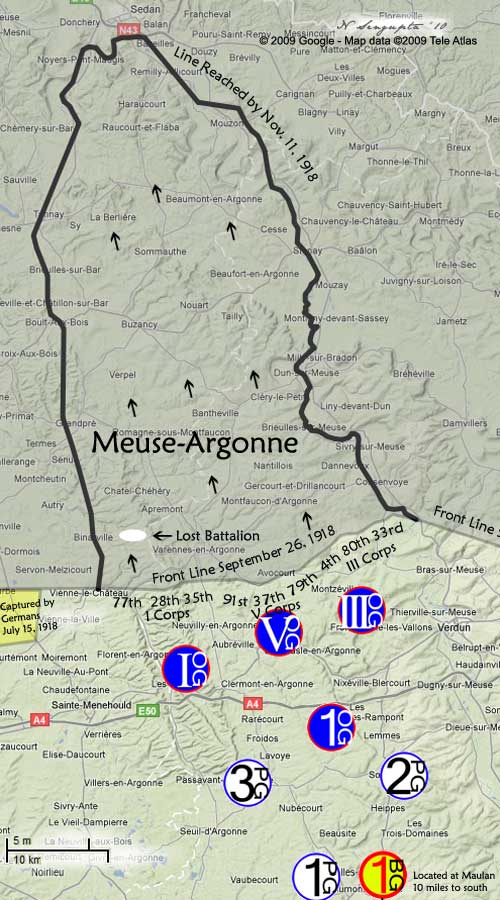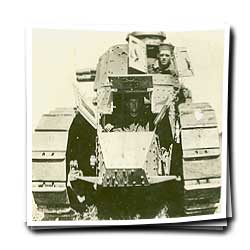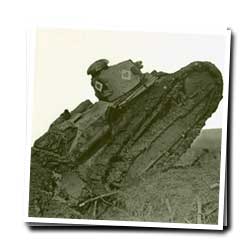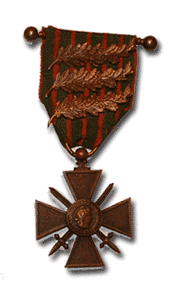American Expeditionary Forces at Meuse-Argonne
On September 26, 1918 a massive series of offensives utilizing 92 British, Belgian, French and American divisions rippled urgently forward across the entire Western Front. Near the center of the offensive, 15 American and 22 French divisions attacked on a broad front from Rheims all the way to the Meuse River near Verdun. The offensive would eventually get the name Meuse-Argonne, in honor of the river on the right and the great forest on the left of the territory that was fought over.

This map of the Meuse-Argonne sector shows the US Infantry Divisions as well as the supporting air units. The air units are denoted by the large circles. IOG is I Corps Observation Group, 1OG is 1st Army Observation Group, 1PG is 1st Pursuit Group, 1BG is 1st Bomber Group, etc.
The Meuse, known as the Maas to the Dutch and the Germans, had defined much of the front lines and for a very logical reason: it was a perfectly defensible natural barrier. The beautiful emerald green river had high forested embankments on both sides along much of its length which were penetrated mainly by easily defended cities and agricultural terrains susceptible to inundations.
For centuries, its sinewy looping course had been a convenient defining line between the Germanics to the east and their French cousins to the west. Going back to the time of Charlemagne's grandchildren, his Frankish Empire had been divided in three parts at the Treaty of Verdun in 843. Grandson Louis received East Francia, loosely akin to Germany. Charles received West Francia, which corresponds vaguely to France. And Lothar received Middle Francia, a more or less equal part in between. This part covered much of modern-day Holland, Belgium, Luxembourg, Lorraine, Burgundy, Switzerland, Tuscany, Lombardy and the Veneto. Through the middle of it as a linking backbone was the Meuse River. The cities it linked were significant, though rarely extremely large and included Neufchateau, St. Mihiel, Verdun, Dun-sur-Meuse, Sedan, Charleville-Mezieres in France and then Dinant, Namur, Liege in Belgium, Maastricht and Nijmegen in Holland. All of these were destined to frequently intersect with history due to their location between France and Germany.
Lothar and his Kingdom were squeezed out of existence by his two brothers, but his name lives on in the French province of Lorraine which the Germans call Lotharingia. And since that time, this middle ground has proven a meeting place for armies at war as well as a porous cultural-linguistic dividing line between Germanic and Francophone peoples.
Over time the French had fortified a number of their towns on the banks of the river, perhaps never quite trusting that the land was going to remain theirs.
 For the Americans, the Meuse-Argonne was their third great offensive though it was actually part of a general attack across much of the Western Front involving the other Allies. At the center just to the left of the Meuse River and Verdun was the American First Army – pointing north at the German Fifth Army. The First Army consisted of I, V and III Corps running from west to east. The American divisions jumping forward on the first day were, from west to east, the 77th, 28th, 35th, 91st, 37th, 79th, 4th, 80th and 33nd divisions. The rest of the American divisions were positioned behind them in reserve. On either side of the Americans were the French Fourth Army and the French XVII Corps.
For the Americans, the Meuse-Argonne was their third great offensive though it was actually part of a general attack across much of the Western Front involving the other Allies. At the center just to the left of the Meuse River and Verdun was the American First Army – pointing north at the German Fifth Army. The First Army consisted of I, V and III Corps running from west to east. The American divisions jumping forward on the first day were, from west to east, the 77th, 28th, 35th, 91st, 37th, 79th, 4th, 80th and 33nd divisions. The rest of the American divisions were positioned behind them in reserve. On either side of the Americans were the French Fourth Army and the French XVII Corps.
For the Americans, the overall objective was a tall triangular section of land with the city of Sedan, about 35 miles away, at the top.
The following day, September 27th, the British Third Army with 15 divisions and the British First Army with 12 divisions attacked around Arras in northern France. On the 28th, the British Second Army with 10 divisions, the Belgian Army with 12 divisions and the French Sixth Army with six divisions attacked north of Arras to the Belgian coast.
 For the troops it was like being in a slaughterhouse. Of the 29 American divisions that would see combat by the end of the war, all 29 were in combat in mid-October, and they were holding approximately one quarter of the Western Front, which was just a little more than the British, though far less than the French. In all, approximately 1.2 million American soldiers fought in the Meuse-Argonne offensive. The Germans were falling back, and their numbers were starting to shrink with alarming acceleration, at least from their perspective. But they were hardly beaten, and even in retreat were able to show the stuff they were made of and inflict heavy casualties on the Americans. The three weeks from September 29th to October 19th saw the Germans kill 6,589, 6,019 and 5,019 Americans respectively making them the three bloodiest weeks of the war for the American Expeditionary Forces.
For the troops it was like being in a slaughterhouse. Of the 29 American divisions that would see combat by the end of the war, all 29 were in combat in mid-October, and they were holding approximately one quarter of the Western Front, which was just a little more than the British, though far less than the French. In all, approximately 1.2 million American soldiers fought in the Meuse-Argonne offensive. The Germans were falling back, and their numbers were starting to shrink with alarming acceleration, at least from their perspective. But they were hardly beaten, and even in retreat were able to show the stuff they were made of and inflict heavy casualties on the Americans. The three weeks from September 29th to October 19th saw the Germans kill 6,589, 6,019 and 5,019 Americans respectively making them the three bloodiest weeks of the war for the American Expeditionary Forces.
The Americans in their exuberance and confidence had made some of the same mistakes the other nations had made repeatedly previously during the war such as charging at machinegun posts. Such brave, but foolhardy tactics had not worked for the others, and not surprisingly they did not work for the Americans either. Yet in spite of such errors, the Americans and their Allies were making excellent progress across the Western Front, and it was the first time since the First Battle of the Marne that the Germans were falling back across such a broad front.
Back to Top.
Welcome/Home Contact Us AEF Maps Build Up
Battle of Seicheprey Battle of Cantigny Belleau Wood Chateau-Thierry St. Mihiel Offensive Meuse-Argonne Offensive Armistice
Visiting Visiting Chateau-Thierry & Belleau Wood
Lists/Tables US Infantry Divisions US Tank Battalions
Links to My Other Websites American WWI Aviation Renault FT-17 75mm Gun Verdun photos
Links to www.USAWW1.com AEF Speaker
AEF Resources (Links, etc.) Other Links
